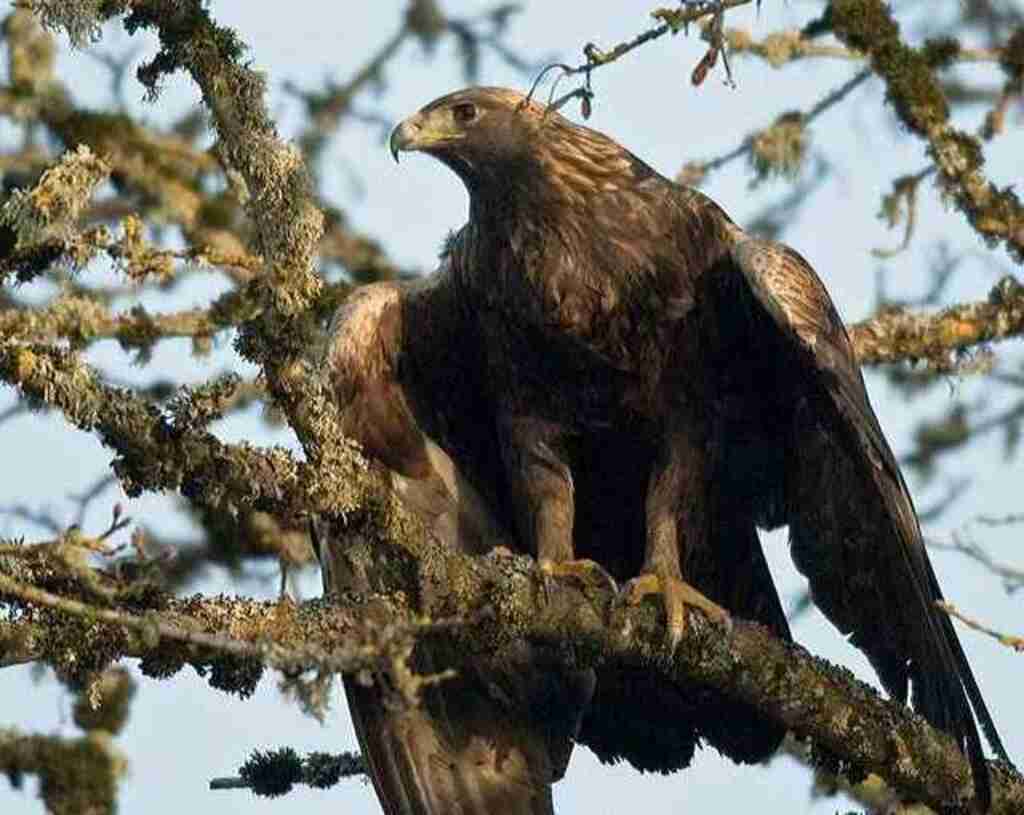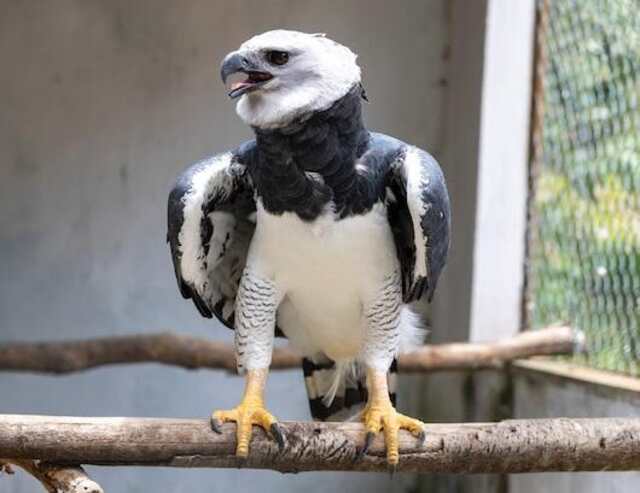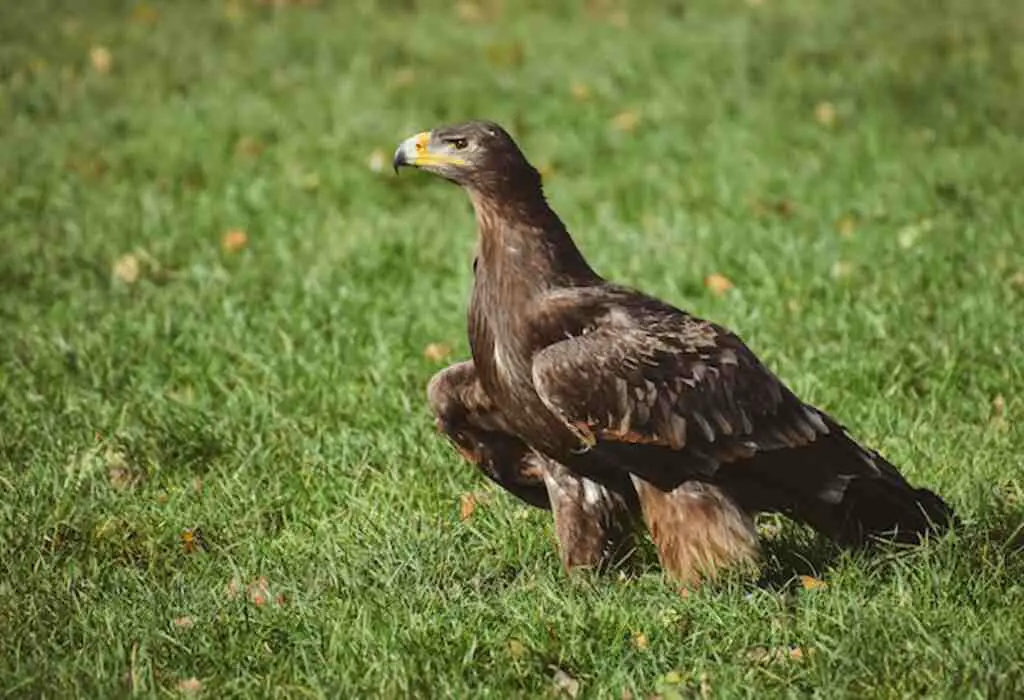Eagles, the majestic rulers of the skies, flaunt their awe-inspiring size and strength with wingspans that could give even the most confident airplane a complex – up to 8 feet of pure “spread your wings and fly” attitude!
This avian royalty, belonging to the Accipitridae family, come equipped with sharp beaks, keen eyesight, and talons that could rival a superhero’s.
With hunting skills that would make Indiana Jones jealous, they command respect as formidable hunters.
So, join us on this adventure as we unravel the question, “How Big Can An Eagle Get?” Prepare to be amazed, entertained, and perhaps a little envious of these majestic feathered daredevils!
Table of Contents
- 1 Key Takeaways
- 2 How Big Can An Eagle Get
- 3 Introduction to Eagles
- 4 Types of Eagles
- 5 Average Size of Eagles
- 6 Largest Eagles in the World
- 7 Wingspan of Eagles
- 8 Weight of Eagles
- 9 Physical Features of Eagles
- 10 Hunting and Feeding Habits of Eagles
- 11 Habitat and Distribution
- 12 Conservation Status of Eagles
- 13 Frequently Asked Questions
- 14 Conclusion
- 15 Author
Key Takeaways
- Eagles have wingspans that can reach up to 8 feet.
- The Harpy Eagle, Philippine Eagle, Steller’s Sea Eagle, and White-tailed Eagle are some of the largest eagle species.
- The Philippine Eagle and Steller’s Sea Eagle have wingspans of 2.0-2.2 meters and 2.2-2.45 meters, respectively.
- Eagles’ weight varies by species, with the Steller’s Sea Eagle and Philippine Eagle weighing up to 20 pounds.

How Big Can An Eagle Get
The size of eagles varies among species, but the largest, the Philippine eagle and the Harpy eagle, can reach impressive sizes. The wingspan of these majestic birds can measure up to 7 feet (2.1 meters) or more. Additionally, they can stand about 3.3 feet (1 meter) tall and weigh up to 20 pounds (9 kg).
Introduction to Eagles
Eagles, majestic birds of prey known for their powerful flight and sharp vision, have captured the fascination of researchers and nature enthusiasts alike. These incredible creatures exhibit fascinating behavior and have unique breeding patterns.
Eagles are known to be highly territorial, with a nesting pair defending their territory vigorously. They build large nests in tall trees or on cliffs, using sticks and other materials.
Breeding usually occurs in the early spring, with both parents taking part in raising the young. The female eagle typically lays one to three eggs, which are incubated for about 35 days.
Once hatched, the parents provide food and protection for the eaglets until they are ready to fledge.
With this understanding of eagle behavior and breeding, we can now delve into the different types of eagles.
Types of Eagles
Among the various species of avian predators, the largest members of the Accipitridae family are known for their impressive size and majestic presence. Eagles, a group of large birds of prey, exhibit fascinating behavior and population dynamics.
When it comes to eagle behavior, they are known for their exceptional hunting skills and ability to soar at great heights.
Eagles are also territorial creatures, fiercely defending their nests and hunting grounds. In terms of population dynamics, eagles are generally solitary birds, with each individual occupying its own territory.
However, some species, such as the Bald Eagle, engage in communal nesting, where multiple pairs build their nests in close proximity.
This behavior promotes social interaction and cooperation among the eagles.
Transitioning to the subsequent section about the average size of eagles, it is important to note that their behavior and population dynamics are closely linked to their physical characteristics.
Average Size of Eagles
The size of eagles varies among different species, with some reaching impressive wingspans of up to seven feet, enabling them to effortlessly soar through the sky and spot prey from great distances.
The average size of eagles, however, is slightly smaller. Most eagle species have an average wingspan ranging from five to six feet, with the body length ranging from 2 to 3 feet.
These majestic birds are known for their powerful beaks and sharp talons, which they use to capture and feed on their prey.
Eagle populations can be found in various habitats around the world, including forests, mountains, and coastal areas.
They are known for their nesting habits, often building large nests high up in trees or on cliffs. These nests are used for breeding and raising their young.
Moving on to the subsequent section about the largest eagles in the world, it is important to understand the factors that contribute to their impressive size and strength.

Largest Eagles in the World
One cannot help but be awestruck by the sheer magnificence and grandeur of the largest eagles in the world, as they effortlessly navigate the skies with their immense wingspans and powerful talons.
When considering the largest eagle species, it is important to compare their sizes to fully appreciate their impressive stature. Here are four notable examples:
- Harpy Eagle (Harpia harpyja): Known for its massive size, the Harpy Eagle can reach a height of up to 3.3 feet (1 meter) and possess a wingspan of around 7.5 feet (2.3 meters).
- Philippine Eagle (Pithecophaga jefferyi): With a height of up to 3.3 feet (1 meter) and a wingspan of approximately 7 feet (2.1 meters), the Philippine Eagle is one of the largest and most powerful eagles in the world.
- Steller’s Sea Eagle (Haliaeetus pelagicus): This majestic eagle can grow up to 3.1 feet (0.95 meters) tall and boasts a wingspan of about 6.9 feet (2.1 meters).
- White-tailed Eagle (Haliaeetus albicilla): With a height of up to 2.8 feet (0.85 meters) and a wingspan of around 8 feet (2.4 meters), the White-tailed Eagle is one of the largest eagles found in Europe.
These remarkable creatures exemplify the immense size and power that can be achieved by the largest eagle species.
Now, let’s delve into the fascinating world of eagle wingspans.
Wingspan of Eagles
Impressive in scale, the wingspans of eagles showcase their remarkable ability to dominate the skies. These magnificent birds have evolved to possess wingspans that vary depending on the species and geographical location.
To provide an overview of the wingspan measurements of eagles, the following table presents some of the largest species and their corresponding wingspans:
| Eagle Species | Wingspan (in meters) |
|---|---|
| Philippine Eagle | 2.0-2.2 |
| Steller’s Sea Eagle | 2.2-2.45 |
| White-tailed Eagle | 2.2-2.45 |
These measurements highlight the impressive scope of wingspans that eagles can attain. An eagle’s wingspan plays a crucial role in its flight capabilities, allowing it to soar effortlessly and cover vast distances.
The next section will delve into another aspect of these majestic birds, their weight, providing further insights into their physical characteristics and adaptations.
Weight of Eagles
The wingspan of eagles, previously discussed, is an important physical characteristic that enables them to soar across vast territories in search of prey.
However, the weight of eagles is equally significant in understanding their overall size and capabilities. Eagles can vary in weight depending on their species and the region they inhabit. Here are four examples of eagle species and their average weights:
- Bald Eagle: The national bird of the United States, the Bald Eagle, has an average weight of 7 to 14 pounds.
- Golden Eagle: This majestic bird, found in North America, Europe, and Asia, has an average weight ranging from 7 to 15 pounds.
- Steller’s Sea Eagle: Native to northeastern Asia, this impressive eagle can weigh between 15 to 20 pounds.
- Philippine Eagle: Known as one of the largest and most powerful eagles, it can weigh up to an astonishing 20 pounds.
Understanding the weight of eagles is crucial for assessing their ability to hunt and sustain themselves.
In the next section, we will explore the physical features of eagles, which contribute to their remarkable hunting skills.
Physical Features of Eagles
With their sharp beaks and powerful talons, eagles possess physical features that contribute to their remarkable hunting skills.
One of the most notable features of eagles is their exceptional eyesight. They have keen vision, with a visual acuity that is estimated to be four to eight times greater than that of humans.
This allows them to spot prey from great distances while soaring high in the sky.
In addition to their keen eyesight, eagles have strong and sharp talons.
These talons are used for capturing and gripping their prey, providing them with a secure hold during flight and allowing them to carry prey that is larger and heavier than their own body weight.
This combination of exceptional eyesight and powerful talons makes eagles highly efficient hunters.
Transitioning into the subsequent section about ‘hunting and feeding habits of eagles’, it is evident that these physical features play a crucial role in their ability to locate, capture, and feed on their prey.

Hunting and Feeding Habits of Eagles
Eagles exhibit a remarkable ability to locate, capture, and feed on their prey due to their exceptional hunting and feeding habits.
Their hunting techniques vary depending on the species and the type of prey they target. Eagles are known for their keen eyesight, which allows them to spot potential prey from great distances.
Once a target is identified, eagles use their powerful wings and sharp talons to swiftly dive and snatch their prey from the ground or water surface.
They are also skilled at catching prey in mid-air, often engaging in aerial battles with other birds to claim their catch.
In terms of feeding behavior, eagles are primarily carnivorous and consume a variety of prey, including fish, small mammals, birds, and reptiles.
They tear apart their prey using their strong beaks and consume it in small pieces. After feeding, eagles regurgitate pellets containing indigestible materials such as fur, bones, and feathers.
These feeding habits allow eagles to extract maximum nutrition from their prey.
Transitioning into the subsequent section about ‘habitat and distribution’, eagles’ hunting and feeding habits are closely linked to their habitat and availability of prey.
Habitat and Distribution
Habitat and distribution play a crucial role in determining the ecological success and survival of these majestic birds of prey.
Eagles are found on every continent except Antarctica, occupying a wide range of habitats such as forests, grasslands, wetlands, and coastal areas.
They are highly adaptable and can thrive in various environments, from remote wilderness to urbanized regions.
The distribution of eagle populations is influenced by factors such as food availability, nesting sites, and competition with other species.
In some areas, eagles may migrate seasonally to take advantage of changing resources.
Understanding eagle behavior and their specific habitat requirements is essential for their conservation and management.
As we delve into the conservation status of eagles, it becomes apparent that their habitat and distribution are intricately linked to their long-term survival.
Conservation Status of Eagles
The conservation status of eagles is an important aspect to consider in order to ensure their long-term survival and ecological stability, as evidenced by the fact that the population of the Philippine Eagle, one of the world’s largest and most critically endangered eagles, has decreased by 50% over the past three generations due to habitat loss and illegal hunting.
This decline in population is a result of various threats that eagles face in their habitats.
The main threats to eagle populations include habitat loss and degradation, caused by deforestation and urbanization, which reduces their nesting and foraging habitats.
Additionally, illegal hunting and poaching for the illegal wildlife trade further exacerbate the decline in eagle populations.
These threats not only affect eagle populations directly, but also disrupt the balance of ecosystems they inhabit, leading to cascading effects on other species and ecological functions.
To ensure the conservation and long-term survival of eagles, it is crucial to address these threats through habitat protection, law enforcement, and public awareness campaigns.

Frequently Asked Questions
Can eagles fly at night?
Eagles are highly skilled night hunters due to their exceptional vision. They possess specialized adaptations such as a higher number of rods in their eyes, allowing them to see in low light conditions and spot prey.
How long do eagles live in the wild?
The longest living eagle is the Bald Eagle, with a lifespan of up to 30 years in the wild. Factors affecting eagle lifespan include food availability, habitat quality, predation, and human activities.
What is the average lifespan of an eagle in captivity?
The average lifespan of an eagle in captivity varies depending on the species, but it is typically around 20 to 30 years. Captive eagles are provided with proper care and nutrition, which can contribute to their longevity.
Do all eagles build nests?
Eagles do not mate for life, as some individuals may choose to change partners. While most eagle species build nests, there are exceptions such as the bald eagle, which may use existing nests or even nest on the ground.
How fast can an eagle fly?
Eagles can reach impressive speeds, with the fastest recorded speed being approximately 99 miles per hour. They achieve this through their flying techniques, such as utilizing thermal updrafts and employing rapid wing beats.
Conclusion
In conclusion, the majestic eagle, with its impressive wingspan and formidable physical features, is truly a remarkable creature. From the smallest species to the largest, eagles never fail to inspire awe and admiration.
Their hunting and feeding habits, perfectly adapted to their natural habitat, showcase their exceptional survival skills.
However, it is crucial to consider the conservation status of these magnificent birds, as their populations continue to face threats.
Let us appreciate the grandeur of the eagle and strive to protect their existence for generations to come.



